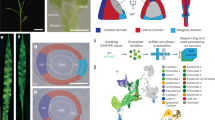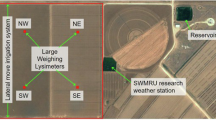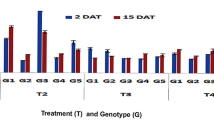Abstract
DURING an investigation of leaf initiation and apical organization in grasses, some particularly clear stages in the origin of the ligule were seen in young leaves of maize shoots cut longitudinally in the plane of the leaves. The development of the grass ligule has received attention from only a very limited number of workers (Bugnon1,2, Ponzo3, Philipson4, and Neumann5), but all agree that it arises solely from the young epidermis. Neumann well summarizes its origin when he says “The ligule of Zea Mays arises from three horizontal rows of epidermal cells lying one over the other”.
This is a preview of subscription content, access via your institution
Access options
Subscribe to this journal
Receive 51 print issues and online access
$199.00 per year
only $3.90 per issue
Buy this article
- Purchase on SpringerLink
- Instant access to full article PDF
Prices may be subject to local taxes which are calculated during checkout
Similar content being viewed by others
References
Bugnon, P., Thesis, Caen (1921).
Bugnon, P., Mém. Soc. linn. de Normandie, 26, 21 (1924).
Ponzo, A., Nuovo Giorn. Bot. Ital., 38, 515 (1931).
Philipson, W. R., New Phyt., 34, 310 (1935).
Neumann, H., Beit. Biol. Pflanz., 25, 1 (1937).
Author information
Authors and Affiliations
Rights and permissions
About this article
Cite this article
SHARMAN, B. Development of the Ligule in Zea Mays L. Nature 147, 641 (1941). https://doi.org/10.1038/147641a0
Published:
Issue date:
DOI: https://doi.org/10.1038/147641a0
This article is cited by
-
Morphogenesis from cultured leaf tissue ofSorghum bicolor-culture initiation
Protoplasma (1982)



